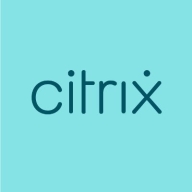

Citrix XenServer and Oracle VM VirtualBox compete in the free virtualization solutions category. XenServer appears to have the upper hand for enterprises due to its robust performance and scalability features, while VirtualBox excels in versatility and ease for desktop virtualization.
Features: XenServer offers advanced capabilities like hot-swappable disks, integrated workload balancing, and provisioning services. It supports seamless XenMotion for live migrations and real-time performance monitoring. VirtualBox provides cross-platform support, RDP access, and flexible VM management, making it ideal for desktop virtualization.
Room for Improvement: XenServer could enhance support for Linux guests, expand third-party integrations, and improve its web-based management console. VirtualBox can advance networking options, add built-in drag-and-drop functionality, and strengthen support for high-performance graphics and automation.
Ease of Deployment and Customer Service: XenServer is well-suited for enterprise-level deployments, although users report some support challenges. VirtualBox is praised for its simplicity and rapid deployment but occasionally garners critiques for limited advanced user support and reliance on community help.
Pricing and ROI: XenServer, initially free, incurs costs for premium support and additional licenses, offering cost-effective solutions compared to VMware. Oracle VM VirtualBox, being free and open-source, is cost-effective for smaller operations, with options for paid enterprise features, making it economical for non-commercial use.
My clients generally maintain their Citrix infrastructure without shifting, suggesting stability and reliable operation as Citrix XenServer is fully established.
I did not perform any long-term stress tests, just for a couple of hours or days on every application.
With valid licenses, we can access hotfixes, service packs, knowledge base, self-help tools, diagnostics, downloads, live chat, and phone support.
They do not provide adequate support for midsize businesses.
There appear to be very few engineers at Citrix who understand the problems.
Their forum and documentation is more than enough for technical support.
Familiarity with Linux can enhance its performance and usability.
I haven't had any significant issues with Citrix XenServer installations over the last 10-15 years.
The snapshot functionality in Oracle VM VirtualBox is effective for management purposes.
Although the product is technically competitive, it is not widely known or used due to poor marketing.
Citrix needs to improve the hypervisor, specifically in security and performance.
We can implement high availability and live migration with pools, along with security and backup to enable role-based access control for safer management.
Having some kind of API to maintain Oracle VM VirtualBox would be beneficial.
It is cheaper compared to its competitors.
Organizations save substantial money because competing solutions, such as VMware, cost double or triple.
The pricing and licensing policy of Citrix XenServer is not transparent and quite confusing.
In the enterprise scenario, all software solutions, including Oracle VM VirtualBox, are expensive.
The most valuable feature is transferring and sharing applications that allow users to move files between devices, including smartphones, tablets, and computers without needing USB cables, internet connections, or data usage.
It provides secure access to applications and resources, which is crucial for us and our clients.
It is user-friendly and easy to deploy, making it an attractive option.
Its snapshot functionality helps with backup management.
The guest OS compatibility was tremendous because I used Oracle VM VirtualBox on Linux and ran Windows applications on top of that, working seamlessly.
| Product | Market Share (%) |
|---|---|
| Oracle VM VirtualBox | 6.0% |
| Citrix XenServer | 4.8% |
| Other | 89.2% |


| Company Size | Count |
|---|---|
| Small Business | 29 |
| Midsize Enterprise | 8 |
| Large Enterprise | 18 |
| Company Size | Count |
|---|---|
| Small Business | 32 |
| Midsize Enterprise | 20 |
| Large Enterprise | 17 |
Citrix XenServer provides virtualization with high availability and robust security, offering seamless VM migration and centralized management through XenCenter. Its expansive compatibility and integration enhance its appeal, particularly for SMBs.
Citrix XenServer is recognized for its user-friendly virtualization capabilities, facilitating dynamic scalability and efficient resource management. It supports a wide range of operating systems and integrates with Citrix solutions for improved operations. Businesses benefit from its affordability and ease of deployment. Despite its strengths, users seek improvements in third-party tool integration, network and backup management, and storage flexibility. High costs, limited Linux support, system complexity, technical support, and hardware compatibility remain challenges. An updated and intuitive interface is in demand for more seamless operations across platforms.
What are the key features of Citrix XenServer?In diverse industries, Citrix XenServer is leveraged for server and desktop virtualization, cloud automation, and infrastructure management. Many deploy it for virtual desktop infrastructure, application delivery, on-premises data centers, and to support Citrix application delivery like XenApp and XenDesktop. Enterprises migrating from VMware often find Citrix XenServer cost-efficient for these applications, serving as a main computing platform for enterprise applications including ERP systems and SQL Servers.
Oracle VM VirtualBox is a robust AMD64/Intel64 and x86 next-generation virtualization solution that functions well for home use and is also powerful enough to handle the needs of a busy enterprise organization. This professional solution is open source and provides super-fast high performance in addition to many outstanding value-added features. VirtualBox functions effectively on Windows, macOS, Solaris, Linux, and more. Users can benefit from VirtualBox's dedication to continually developing the product and providing continual progressive updates and releases. The solution is supported by a trusted dedicated professional community and is backed by Oracle, which guarantees that the product is able to consistently meet and exceed quality controls and protocols at all times.
Oracle VM VirtualBox Features
Oracle VM Virtual Box provides many value-added features. Some of these features include:
Reviews from Real Users
“Oracle VM VirtualBox is easy to use and does not require much training. It uses fewer resources. Teams using new operating system releases can quickly test and implement. This would make the development of new software releases faster and easier. It also helps users to write the program, test, and support it on multiple platforms. It has a good community as it is open-source.” - Satishbabu G., Oracle ACE
“It is easy to use and does not require complex knowledge. It uses less resources, which is a requirement as it is used to onboard hardware with very little resources available.” - A PeerSpot user who is an IT Architect - AI at CGI
We monitor all Server Virtualization Software reviews to prevent fraudulent reviews and keep review quality high. We do not post reviews by company employees or direct competitors. We validate each review for authenticity via cross-reference with LinkedIn, and personal follow-up with the reviewer when necessary.